‘Playing with fire’ is a common phrase used by people to emphasize that whatever it is that you are doing or the course of action that you have taken could be harmful and damaging to you. Yet there is a group of people who have taken up ‘playing with fire’ as their profession: firefighters.
Apart from extinguishing fires, there are two other roles that firefighters play. They provide medical response in emergency situations and educate the general public about fire safety through awareness programs and training.
Who is a firefighter?
A firefighter is a person whose job description is to put out fires and help save the lives of those caught in the unfortunate event of a fire. A firefighter is also a rescuer who has been extensively trained in putting out fires.
A firefighter is also responsible for responding to other emergency situations, such as rescuing people and animals when a building collapses, during earthquakes, floods tsunamis, etc.
To some degree firefighters frequently provide emergency medical services.
Firefighters work very closely with other emergency response agencies such as the police and emergency medical service. At times a firefighter’s role may overlap with both, depending on the firefighter’s rank, training, job description, and academic qualification.
Some basic tasks of firefighters are; fire suppression, rescue, fire prevention, basic first aid, and investigations. Firefighting is one of the 3 main emergency services.
Firefighters differ in categories as well as training and ranking. Different firefighters fight different types of fires.
Firefighters are deployed by any of the following institutions and industries:
- Local authority fire services
- Airports and ports
- The armed forces
- A small number of industrial organizations, such as those in the chemical, nuclear, gas and oil industries
- Hospitals
Some of the responsibilities of a firefighter are as follows:
- Educating the local communities about the fire hazard
- Auditing safety equipment
- Investigating the cause of the fire
- All firefighters have to get themselves certified in the Emergency Medical Treatment and get victims to stabilize once they are rescued
- Rescue victims, both people, and animals
- Driving firefighting and emergency vehicles
- Perform forest maintenance tasks such as building trails, bush cutting, and clearing fallen trees, among other forest maintenance tasks
- Perform drills
- Contain the incident, while rescuing those affected by the fire, whether directly or indirectly
Types of firefighters
There are several types of firefighters:
Aircraft rescue and firefighting, also known as air force firefighter: this type of firefighter is trained to extinguish fires in aircraft.
Firefighter EMT: this fire fighter’s job description is in a manner similar to that of a firefighter paramedic. A firefighter EMT’s scope of work involves responding to emergency incidents, extinguishing the fire, and providing medical services.
Firefighter engineer: this type of firefighter usually drives the firefighting vehicle that transports the other types of firefighters, carries equipment and pumps water through the hoses and pumps at the fire scene.
Forest firefighter:, as the name, suggests this firefighter controls and prevents fires in the forests.
Firefighter paramedic: this firefighter responds to medical emergencies, assists other medical personnel, and also extinguishes the fire, and protects life and property in the line of duty.
Reserve firefighter: this firefighter assists local fire departments during events such as rescue operations, fire, and medical emergencies, among other tasks.
Shipboard firefighters: a shipboard firefighter deals with fires on the ship, a shipboard firefighter is somewhat similar to structural firefighting with a few differences.
Firefighters are broadly divided into 3 large categories depending on the type of firefighting they do:
- Structural firefighters
- Wildland firefighters
- Volunteer firefighters
Let’s look at each one in detail.
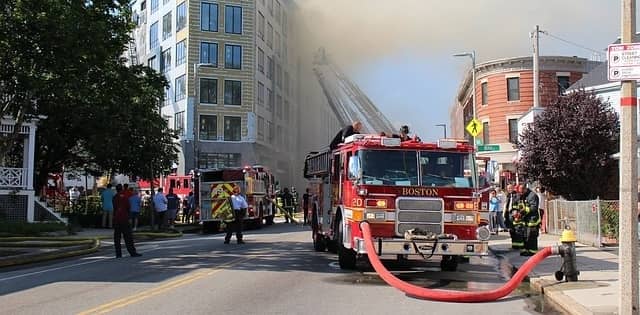
1. Structural firefighters
What do structural firefighters do?
Structural firefighters are your typical city/town firefighters. They help exhaust residential fires as well as those fires that occur in commercial structures, from big cities like New York to small towns. In addition, they also provide response for medical emergencies.
Structural firefighters work in companies of 3 to 5 persons. Those firefighters that staff and operate firetrucks with water and other apparatus such as fire pumps and hoses are called engine companies.
Firefighters whose firetrucks have a ladder are called ladder companies. Ladder companies are tasked with breaking into structures that are under fire so that engine companies can attack the fire. In addition, ladder companies also work on search and rescue.
Responsibilities of a structural firefighter:
- Protect the public in emergency situations
- Respond to a wide variety of emergency calls, such as floods, car crashes, chemical spills, water rescue, and general rescue as well as fires
- Responds to structure fires
- Pre-fire planning
- Find and rescue victims in fires and other emergencies
How much does a firefighter make an hour?
Pay for firefighters is dependent on 3 factors:
Location: If you work in areas such as New York and New Jersey, expect pay to be higher since the cost of living is much higher in these locales as compared to the rest of the country.
According to figures provided by the US Bureau of Labor Statistics, the median pay for a firefighter in the US stands $23.09 per hour or $48,030 per year. Bear in mind that this is median pay and you should expect to earn less if you are starting out and expect to earn more if you are experienced.
If you are just starting out, as an entry-level firefighter, you could earn up to $40,000 per year. As you work through the career ladder, your pay could reach close to $100,000 per year!
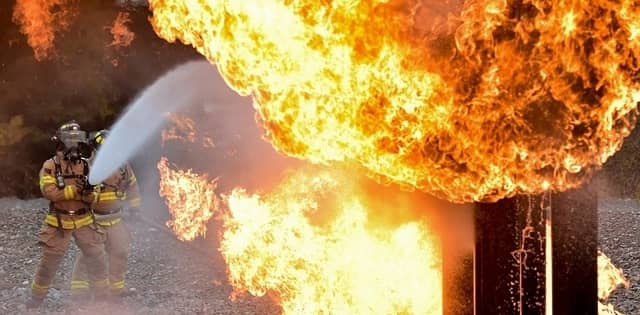
How dangerous is firefighting?
Not to burst your bubble but firefighting isn’t as dangerous as movies make them out to be. About 100 firefighters die each year but the profession still doesn’t rank in the top 10 dangerous jobs’ list. Yes, there is always a hazard when fighting fire but a lot of those deaths occur due to heart attacks owing to fitness problems. What’s more? The average firefighter will see a fire just ONCE a month.
What is the percentage of female fire fighters?
The gender disparity in the field of firefighting is huge. Only 7% percent of firefighters are women, according to data provided by the National Fire Protection Association. In some areas, the figures are much lower. The New York City Fire Department reported that in 2015, out of 10,000 active firefighters, only 58 were women, which amounts to a meagre 0.5%.
However, the numbers in Canada are even lower. Of the firefighting force, only 4% are women.
To date, 98 women firefighters have died in the line of duty.
What are the physical requirements for a firefighter?
Expectedly, getting into the firefighting field means you have to be in good shape. A standard physical ability test called CPAT must be passed to prove that you are fit for the physical nature of this field. During CPAT, you are tested in the following categories:
- stair climb
- hose drag
- equipment carry
- ladder raise and extension
- forcible entry
- search
- rescue
- ceiling breach and pull.
During your CPAT test, you will be asked to wear a 50-pound vest which simulates the weight of your protective gear and breathing equipment. Another load of 25 pounds which is divided into 2 separate packs will also be added to the 50 pounds to simulate the load of your hose pack. Tough work!
What are the requirements to be a firefighter?
While on the surface it seems like a job that would mostly be awarded on passing your physical ability test, the reality is quite different. Here is a brief look at the requirements to be a firefighter.
- Be at least 18 years of age and have a valid driving license.
- A high school diploma at the very least.
- Be in good physical condition to pass CPAT – the physical ability test.
- Be honest about your past mistakes during the interview. Accept when you have made mistakes and show that you have learned from them and improved yourself.
- In today’s technology driven world, your social media profiles may also be checked before you are hired. Inappropriate content that you may have created or shared could count against you.
- Show that you are fiscally responsible. Your credit score will up during background checks and if things are bad, try to show that you are serious on improving your situation.
- Have a record of community service. If you have volunteered in programs that focus on helping people, that will earn you extra points since firefighting is about showing humanity to people in difficult situations.
- Pass a psychological test to prove you are mentally strong to withstand the stresses of the job.
- Try to get your entry-level firefighting certifications – Firefighter I and Firefighter II.
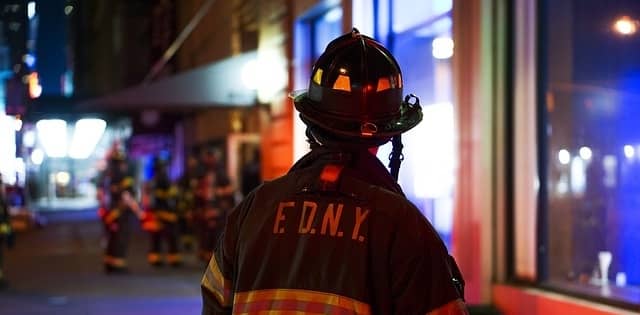
Why do firefighters work 24-hour shifts?
The fire department is an essential, emergency service that needs to be available round the clock. We can’t control the timing of an emergency situation and neither can we control when people call in for their emergencies. That’s one of the reasons why firefighters work 24-hour shifts.
24-hour shifts also have to do with cost saving. Imagine a firefighter who works 8-hour shifts to have an emergency to attend to right before the 8-hour shift closes. That run could extend the shift by several hours and that would mean the fire department would have to pay overtime. With 24 hour shifts, if a run does take a few hours, it would still be covered under normal working hours pay.
Also, in those 24 hours, a lot of time is also spent on equipment maintenance. If your life is going to depend on a piece of equipment, you want to make sure it is in top shape!
How much does it cost to become a firefighter?
Fire departments employ people with various levels of expertise depending on the seniority of the position in question.
Many fire departments will only need a high school diploma for entry-level jobs. Other jobs within the department require a higher level of expertise.
Many potential firefighters have realized that having a relevant certificate or diploma boosts your chances of securing a job.
A 12-week training certificate at Texas A&M’s Fire Recruit Department could set you back $5,300. In addition, expect to pay for gear, uniform, and books.
An Associate’s degree in Fire Science from McHenry County College costs around $6,000. If you are an out of state student, expect to pay a whopping $27,000!
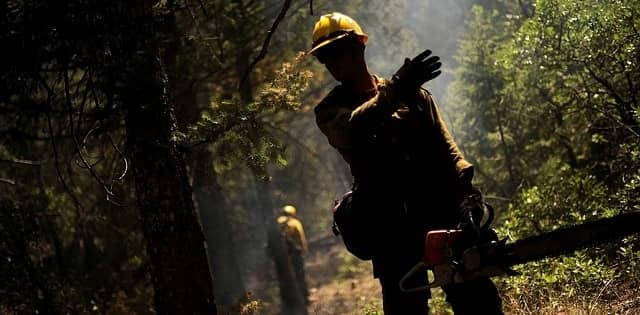
2. Wildland Firefighter
What does a wildland firefighter do?
Wildland fighters are not your average in-city firefighters.
With the rise in global temperatures due to climate change, wildfires are swallowing forests at record rates. To control these fires and reduce chances of new ones occurring in the wild, we have wildland firefighters. They fighter forest fires and the likes outside of cities and towns where infrastructure is limited or non-existent.
Some responsibilities of a wildland firefighter:
- Extinguish and contain wildfires using equipment and maneuvers
- Perform a different role as a crew member to other firefighters
- Perform forest maintenance such as bush cutting and building trails; this helps with rescue and fire prevention
- Conduct fire safety education programs within the community
- Inspect the fire area and determine the cause of the fire
- Conduct regular check and repair on various types of equipment such as fire tractors, movers, etc
Are there different types of wildland firefighters?
Wildland firefighting can be very challenging on the mind and body. There are various types of wildland fighters with different specializations;
- Fuel Crew: Fuel crews work in groups of 10s. They specialize in fuel-related wildfires such as those involving timber or shrubs.
- Engine Crew: Engine crews operate in smaller groups of at least 3 to mid-sized groups of 10 people. Their main duties revolve around fire suppression and patrolling.
- Hand Crews: Hand crews play a critical role in containing wildfires. They dig fire lines so fires do not spread. Hand crews operate in groups of up to 20 members. They also work on restoring burnt areas to allow life to grow again.
- Hotshot Crew: they are a specialized version of the hand crew in that they operate in rough terrains. There is a significant shortage of such firefighters and that’s why they are always traveling to be able to serve different parts of the country.
- Helitack Crew: They fight fires from the air by spraying fire retardants and other chemicals from their helicopters. The helicopters are also used to bring in supplies and transport injured personnel to hospitals.
- Smokejumpers: When roads to get to a fire are difficult or there is limited time, smokejumpers jump from airplanes and use their parachutes to safely land at locations they are needed.
How much does a wildland firefighter get paid a week?
A wildland firefighter’s job can be very seasonal. You may be busy during the hotter months, but when snow and rain come into play, you be out of work for months.
A wildland firefighter’s hourly wage can average around the 15-dollar mark. During hotter months when fires are raging, wildland firefighters are able to take home a fat paycheck because of the overtime and hazard pay they may receive.
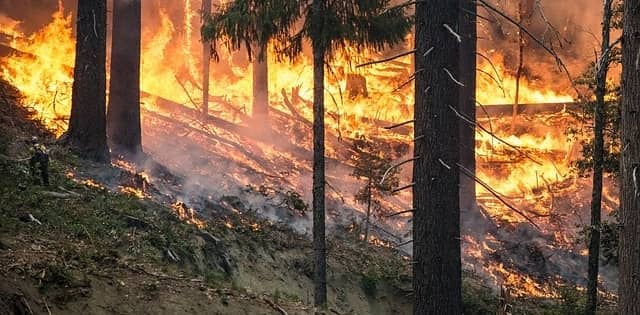
How dangerous is it to be a wildland firefighter?
Mathew Desmond, a career wildland firefighter who later worked as a professor at Harvard University says wildland firefighters themselves do not think their job is dangerous; they feel risk can be minimized by making smart decisions and being situationally aware.
However, numbers from the US Fire Administration tell a different story. Compared with structural firefighters, wildland firefighters have higher mortality rates. The total number of deaths of firefighters was 859 between the years 1994 and 2013. Of these, at least 27% were wildland firefighters!
Are there many women wildland firefighters?
Of the total number of forest firefighters employed at the federal level, only 12% are women. Firefighting was and has continued to remain a field that is dominated by men. Women continue to raise their voices to highlight the gender imbalance that the field is experiencing. Women have also complained about verbal abuse and sexual harassment that goes unnoticed within this field.
What are the physical requirements for a wildland firefighter?
Wildland firefighting involves great levels of physical stress. In order to secure the job, you must pass the Work Capacity Test – what is informally known as the pack test.
WCT is physically very challenging. Not only does it test your muscular strength but also your flexibility and endurance. One of the parts of this test involves a 3-mile hike with a 45-pound weight backpack to carry with you!
What are the training requirements to become a wildland firefighter?
You are required to fill out a Health Screening Questionnaire which will be reviewed by the Human Resource office. If given the go-ahead, you may start training for your WCT. A clearance is required because many firefighters suffer from heart attacks in the line of duty and the department wants to ensure that you are in top physical shape for the job.
You are required to begin training at least 4 weeks prior to taking you WCT, hiking and jogging with various levels of workload to improve your endurance.
What does a typical shift for a wildland firefighter include?
Wildland firefighting is a seasonal job. During the cooler and rainy months, many of the wildland firefighters don’t have jobs.
Typically, a wildland firefighter is required to work 3 days and gets 4 days off. However, in reality, that can be hard to manage depending on the severity and scale of wildfires that crop up.
How many hours does a wildland firefighter work?
During normal weeks, a wildland firefighter will work 72 hours per week and 4 days off. However, during major wildfires, you may spend up to 14 days away from home.
How long does a wildland firefighter work in that career?
Wildland firefighters start out as seasonal employees and may work up to 6 months each year. However, as they grow in seniority and experience, they can expect to work more months every year.
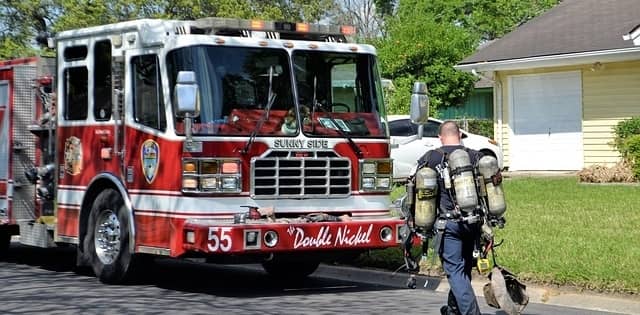
3. Volunteer Firefighter
What does a volunteer firefighter do?
Volunteer firefighters normally do all tasks that a full-time or career firefighter does, albeit for a short period of time. Their duties include fire suppression as well as provision of emergency medical response to various situations in their locality.
Fun fact: 69% of firefighters in the US work on voluntary basis.
Some of the responsibilities of a volunteer firefighter:
- Work in extreme climatic conditions
- Participate in drills and physical training classes
- Perform fire fighting duties and respond promptly to emergency calls
- Administer first aid at the time of medical emergencies
- Drive fire tracks and other medical related vehicles
- Rescuing victims from different emergencies such as car crashes
- Manual labor such as carrying fire hoses upstairs or ladders, and breaking down doors
- Perform any other specific tasks assigned by the commanding officer
Are there different types of volunteer firefighters?
There no different ‘types’ of volunteer firefighters as such but these volunteers are assigned different tasks based on their area of expertise. Some might be better trained to handle emergency medical response while others may be physically trained and help with firefighting.
How much is a volunteer firefighter paid?
Generally speaking, volunteer firefighters aren’t paid. Some fire departments may pay an hourly wage of between $8 and $12 when you are actually out in the field responding to a fire call.
Since fire departments have small budgets, they may pay for your transport, training, and even clothing.
As a volunteer, you are most likely not in it for the pay but to gain valuable experience and to serve the community.
How dangerous is it to be a volunteer firefighter?
Firstly, as a volunteer firefighter, it isn’t necessary that you are sent out to handle calls. You may be assigned other tasks such as emergency medical response or other administrative tasks within the department.
When you are sent out to attend to fire calls, you are required to have completed prior training and certifications as would be applicable to any firefighter.
While firefighting sounds dangerous, it is very safe for trained and experienced firefighters because they know how to minimize risk and make intelligent decisions in crunch situations.
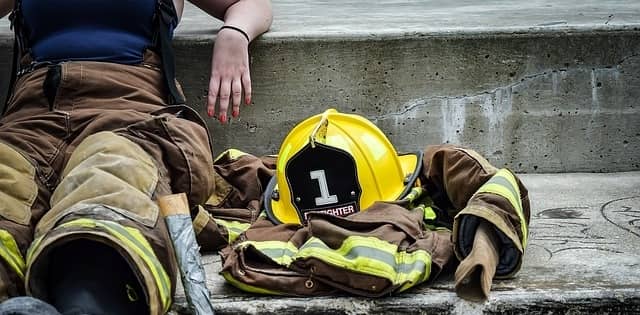
Are there many women volunteer firefighters?
The gender gap in firefighting is very significant. Of the approximately 1,160,000 firefighters in the US, only 7 percent are women.
Fire departments all over the country recognize the gender gap are actively working on recruiting more women to join fire service and to be role models for other women interested in the field.
To answer the question, yes there are volunteer firefighters but their numbers are dwarfed by male firefighters.
What are the physical requirements for a volunteer firefighter?
Apart from the general certifications, you are required to pass a physical ability test called CPAT. Firefighting can be stressful on the mind and body and this test helps ensure you are fit and ready to tackle challenges.
What are the training requirements to become a volunteer firefighter?
Firefighting can be a risky route if you have no prior training. Fire departments all over the country recognize this and have put in place relevant requirements to ensure you are qualified and ready to handle challenges.
If you want to be out fighting fires, you need to complete certifications as Fireman I and II. If you are into emergency medical response, you need to complete at least 110 hours of training and obtain an EMT certificate before you are allowed to assist fulltime firefighters. These programs are certified by the National Fire Protection Association.
What does a typical shift for a volunteer firefighter include?
Typically, you can expect to work 12 hour shifts every day. Fortuna Fire Department in California for example has 2 shifts for volunteers. Shift A runs from 6 in the morning to 6 in the evening. Shift B starts at 6 in the evening (1800 hours) to 6 in the morning.
If you are out in the field responding to calls, or if a serious fire situation has arisen, you may be asked to stay put for longer hours.
How many hours does a volunteer firefighter work?
During your voluntary period, you will normally work 12 hours a day and may get 1 or 2 days off every week.
Again, these are averages and you may be asked to put in more time where there is a shortfall in manpower to deal with larger fires.
How long does a volunteer firefighter work in that career?
Given that you are a volunteer, you can control how much time you wish to spend during every stint. As a volunteer, you work for fixed periods and then you are free to go on and pursue other interests. However, if your goal is to become a professional firefighter, you may want to keep finding opportunities in volunteer while also working on your professional qualifications.
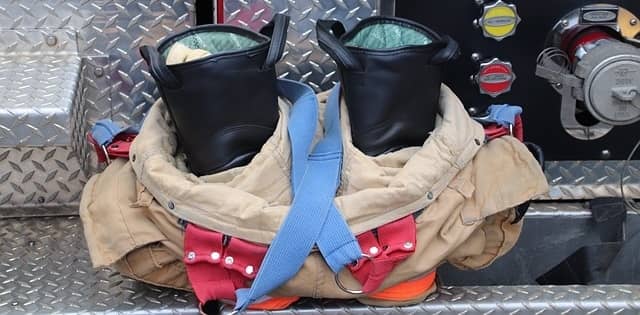
What kind of equipment do firefighters use?
Firefighters use bunker gear and personal protective equipment.
What is bunker gear?
Bunker gear also is known as turnout gear, or fire kit in the United Kingdom and Ireland, are terms used by a number of firefighters to refer to their personal protective equipment (PPE).
It is called a bunker gear from the days when the gear was stored next to the firefighter’s bunk at the fire station to be readily available for use, and turnout refers to the time-saving the practice of turning out the pants over the top of the boots.
What is personal protective equipment?
Personal protective equipment, or PPE, is protective clothing, that includes, but not limited to, items such as safety helmets, goggles, and other garments or equipment designed to protect the wearer’s body from injury and/or infection. It is equipment that protects the user against health and safety risks in the line of duty.
Types of personal protective equipment:
They are four categories of PPE:
- Respiratory protection equipment, to protect the respiratory system, such as disposable, cartridge, airline, half or full face
- Eye protection equipment – for example, spectacles, goggles, shields, visors
- Hearing protection equipment – for example, ear muffs, ear plugs
- Hand protection – for example, gloves and barrier creams
Other types of protective equipment that can be included are:
- Foot protection – shoes and boots
- Head protection – helmets, caps, hoods, hats
- Working from heights – harness and fall arrest devices
- Skin protection – hats, sunscreen creams, sunburn cream, long-sleeved clothes
Protective personal equipment is mostly used to protect workplace accidents from taking place
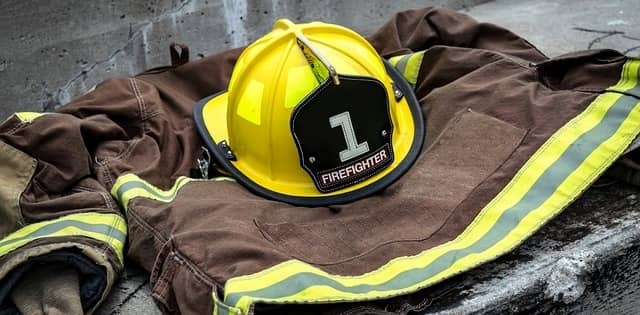
What type of gear do structural firefighters use?
Here is a list of personal protective equipment that structural firefighters use on a daily basis:
- Respirators
- Bunker gear, including turnout jacket and pants
- Protective gloves
- Gas masks
- Blankets
- Protective footwear, e.g. safety boots
- Protective helmet and climbing helmet
- Face mask and visor
- Neck and ear hood
- Nomex and carbon flash hoods
- Radio and self-contained breathing apparatus with a mask
- Flashlight
- Thermal imaging camera
- Personal alert safety system (PASS) device
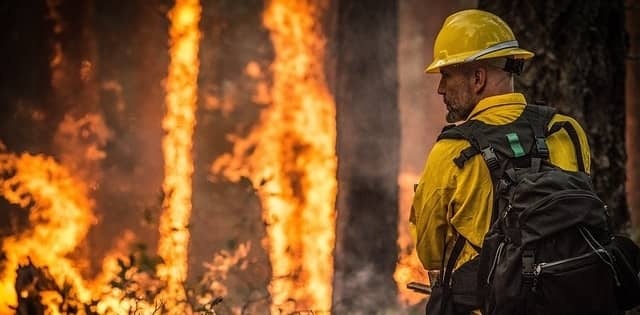
What type of gear do wildland firefighters use?
They use gear that is fire resistant, protective, durable, and dependable. Because wildland firefighters are literally in the forest, fighting fires, they need more specialized equipment, and more PPE than structural and volunteer firefighters.
Their turnout gear (fire shirts and pants) the shirt material should be of Nomex quality that has significant heat and flame resistance.
- Full brim hard hat – the hat should have a shell constructed from high-density polyethylene.
- Wildland firefighting gloves – These should have an extra sleeve length made of a fire retardant material.
- Clear safety goggles
- Leather gloves
- Fire shelter – this is a safety device of last resort used by wildland firefighters trapped by wildfires.
- Water canteen
- Fireproof blankets
- Breathing apparatus
- Wildland fear gear
- Firefighter helmets
- Firefighter boots
- Earplugs
- Space blanket – this is an especially low weight, a low bulk blanket made of heat reflective thin plastic sheeting. They are utilized on the exterior surfaces of aircraft for thermal control, as well as by people.
- Brush coat
- Flares
- Parachute Cord
- Individual first aid kit
- Pulaski
- Mcleod
- Chain saw
- Drip Torch
- Shovel
- Fire pants and fire shirt
- Flagging
Wildland firefighters must be prepared for long days and possibly weeks away at a time in the field, therefore, part of their personal protective equipment includes:
- Toiletries
- Spare clothes
- Food and snacks
- Utility knife
- Prescription medication
- Sleeping bag and other sleeping items
- Other personal items as well
- Map and compass
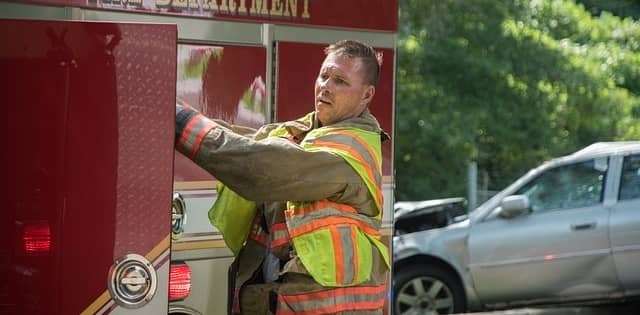
What kind of gear do volunteer firefighters use?
A volunteer’s firefighter gear is protective, durable, and fire-resistant well. Here is a list of the different types of personal protective equipment that volunteer firefighters use on a daily basis:
- Bunker gear
- Breathing apparatus
- Protective gloves preferably two pairs
- Helmet
- Window punch
- Chocks
- Webbing
- Eye protection
- Water
- Identification
- Head lamp
- First aid kit
Firefighting is for the adventurer in you. It’s a very hands-on job that will have periods of thrill and periods of calm. With growth rates of 7% per year for the next decade, it may be a field you want to explore if this is the kind of work you are into.
